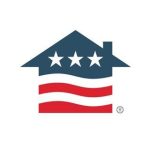Mortgage rates constantly rise and fall, and rarely more swiftly than right now. Dan Green of The Mortgage Reports estimates that rates changed every 3 hours, 23 minutes during the month of June.
If you're in the market for a mortgage or in the process of obtaining one, fluctuating rates can make a big difference in how much you'll pay on your loan. A spike in mortgage rates during the time it takes to close your loan could push your payment past what you can afford.
To keep that from happening, you can ask for a rate lock, a tool that allows prospective borrowers to lock in their interest rate once a purchase agreement is in place.
Here's a basic breakdown of what a rate lock is, its pros and cons, and when to consider locking in your rate:
But first, the basics on rates
Mortgage rates on fixed mortgages are based on mortgage-backed securities that trade on the bond market. When demand is high, mortgage rates are low. As demand lessens, mortgage rates rise.
What is a rate lock?
A rate lock is an agreement from the lender to freeze a mortgage rate for your loan for a certain amount of days, typically 30 to 45. No matter how much the rate drops or rises, you get the rate on the agreement.
Pros of rate locks
Obviously, if the rate jumps after you secure your rate lock, you've saved money, because your rate will be lower than if you decided to float. You can lock in the rate anytime after entering into a purchase agreement. Keeping a sharp eye on rates over time and news on the horizon can help you can get the best possible deal. Mortgage News Daily has a great tool for tracking mortgage rates.
Cons of rate locks
The fluctuations of mortgage rates can be hard to track, and you could easily see a lower rate when you close on your loan than the one you locked in. A few lenders offer a float-down rate lock, which allows you to get a lower rate than the one you locked in should rates drop, and still get your locked rate should rates rise. Lenders can also charge fees for a rate lock.
When you should lock in
It’s a tough question to answer. The best time to lock is when you think rates aren't getting any lower. What figures to look at will depend on what time of mortgage you have. For an adjustable-rate mortgages, you'd look at either short-term Treasury or the LIBOR, the interest rate banks charge each other on short-term loans. For fixed mortgages, check out mortgage-backed securities, and keep an eye on basic economic indicators. As the economy worsens, fixed rates fall.
Learn more about VA rates and the overall VA loan process.
Related Posts
-
 What Is The VA Seller Concession Rule?When buying a home with a VA loan, one potential way to save money is by negotiating seller concessions. Seller concessions are financial incentives or contributions from the seller that help reduce the buyer's out-of-pocket expenses. The Department of Veterans Affairs (VA) allows these concessions to cover up to 4% of the loan amount, but they must be items outside of standard closing costs.
What Is The VA Seller Concession Rule?When buying a home with a VA loan, one potential way to save money is by negotiating seller concessions. Seller concessions are financial incentives or contributions from the seller that help reduce the buyer's out-of-pocket expenses. The Department of Veterans Affairs (VA) allows these concessions to cover up to 4% of the loan amount, but they must be items outside of standard closing costs. -
 How Discount Mortgage Points Work on a VA LoanPurchasing discount points on a VA loan can be a good investment for Veterans looking to lower their interest rate.
How Discount Mortgage Points Work on a VA LoanPurchasing discount points on a VA loan can be a good investment for Veterans looking to lower their interest rate.

